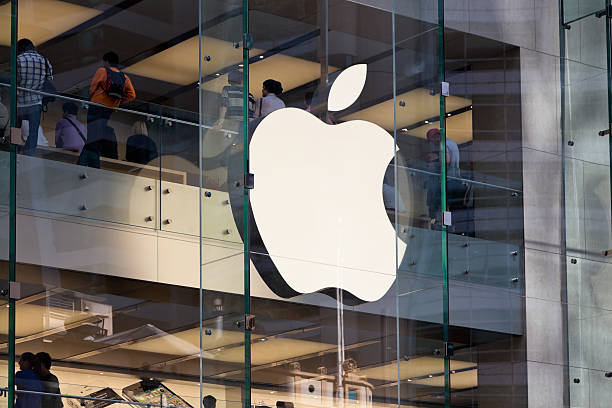
Apple beats Q3 revenue forecasts with 94 B revenue; Q4 outlook strong despite 1.1B tariffs.
iPhone sales rise 13.5% to $44.58B; Apple diversifies production amid tariffs, China revenue rebounds.
Apple faces AI, regulatory challenges; Q3 services $27.42B, mixed device sales, 46.5% gross margin.
Apple Exceeds Revenue Expectations Despite Tariff Headwinds
Apple projected its revenue for the current quarter ending in September well above Wall Street forecasts on Thursday. This optimistic outlook boosted the company’s shares, despite CEO Tim Cook’s warning that U.S. tariffs would increase costs by $1.1 billion during the period.These tariffs,central to President Donald Trump’s trade conflict, had already cost Apple $800 million in the June quarter and prompted some consumers to accelerate iPhone purchases earlier in the year.
These early sales contributed to Apple’s fiscal third-quarter revenue surpassing expectations by the largest margin in at least four years, according to LSEG data. Apple’s CFO, Kevan Parekh, highlighted anticipated revenue growth in the "mid to high single digits" for the upcoming quarter, a figure that would exceed analysts’ predicted 3.27% increase to $98.04 billion, as per LSEG estimates.
For the fiscal third quarter ended June 28, Apple reported $94.04 billion in revenue, representing a nearly 10% rise from the prior year and surpassing analyst forecasts of $89.54 billion. Earnings per share also outperformed predictions, coming in at $1.57 versus the expected $1.43. Shares of Apple (NASDAQ:AAPL) rose 3% in after-hours trading, extending gains following the company’s revenue guidance.

Strong Product Sales and Geographic Performance Amid Tariff Challenges
iPhone sales, Apple’s top revenue driver, climbed 13.5% to $44.58 billion, exceeding the anticipated $40.22 billion. To mitigate tariff impacts, Apple has diversified production locations, sourcing iPhones from India and manufacturing Macs and Apple Watches in Vietnam. The U.S. market, which could be impacted by tariffs, saw Americas segment sales increase 9.3% to $41.2 billion. In Greater China, where Apple faced delays in approving AI features, revenue grew to $15.37 billion, beating expectations of $15.12 billion and marking a rebound from a previous quarter’s year-over-year decline.
Cook attributed some of this growth to a government subsidy program aimed at reviving China’s smartphone market, noting this was the program’s first full quarter in effect. During a call with analysts, Cook shared that seasonal upgrade records were set for iPhones, Macs, and Apple Watches. He estimated that approximately 1 percentage point of the 9.6% sales growth was driven by customers purchasing ahead of tariff increases. He acknowledged early-quarter evidence of "pull-ahead" demand caused by tariff uncertainty but also highlighted that Apple’s active iPhone user base reached record highs globally.
With ongoing U.S. negotiations with China and India—President Trump has suggested India might face 25% tariffs soon—analysts see India's production cost advantages as potentially beneficial for Apple in the long run.

AI, Competition, and Regulatory Pressures Challenge Apple’s Outlook
Despite strong sales, Apple faces multiple hurdles beyond tariffs. Competitors like Samsung continue to pressure the premium smartphone market, while software rivals such as Alphabet integrate AI extensively into Android. In contrast, Apple’s stock has declined 17% in 2025, reflecting investor concerns over tariff effects and perceived slow AI integration. Although the release of an AI-enhanced Siri has been delayed, Cook said progress is underway on a more personalized version. Apple is ramping up AI investments but has not matched the massive spending of other tech giants. Cook stressed Apple's AI strategy focuses on combining advanced technology with ease of use, maintaining accessibility for users.
In Europe, regulatory decisions pose risks to Apple’s profitable App Store business. Meanwhile, Apple’s services segment—including the App Store, music, and cloud storage—generated $27.42 billion in revenue, surpassing the $26.8 billion analysts expected. Wearables sales, including AirPods and Apple Watches, totaled $7.4 billion, falling short of the $7.82 billion forecast, while Mac sales reached $8.05 billion, above estimates of $7.26 billion. iPad revenue was $6.58 billion, missing the $7.24 billion target. Apple’s gross margin for the fiscal third quarter stood at 46.5%, above the 45.9% forecast. For the upcoming quarter, the company projects gross margins between 46% and 47%, again exceeding analyst expectations.

* The content presented above, whether from a third party or not, is considered as general advice only. This article should not be construed as containing investment advice, investment recommendations, an offer of or solicitation for any transactions in financial instruments.


